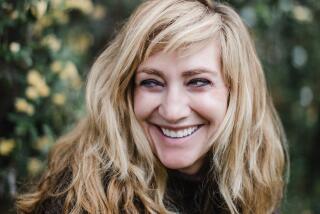DISCOVERIES
Sugarcane Academy
How a New Orleans Teacher and His Storm-Struck Students Created a School to Remember
Michael Tisserand
Harcourt/Harvest: 184 pp., $13 paper
“WHAT happened to my town? What does it look like? When can I go back? Does it miss me?” These are a few of the questions Michael Tisserand’s daughter, Cecilia, asked him after they evacuated their home in New Orleans in late August 2005, as Katrina approached, and went to stay with friends in a nearby town. In September, the Tisserands and two other families started a one-room schoolhouse in an abandoned office building. They called it Sugarcane Academy, after the surrounding fields of sugar cane. Paul Reynaud, a much-loved teacher from Tisserand’s neighborhood school back in New Orleans, was their first teacher. When the family returned to New Orleans in October, Sugarcane Academy, with Reynaud as its principal, moved onto the campus of Loyola University and grew to 50 students. The contrast between the hopefulness and ingenuity of the parents, students and teachers who created the school and the despair of downtrodden bureaucrats and volunteers who, in Tisserand’s gentle telling, established policies and protocols that become roadblocks to spiritual and physical regeneration is huge.
Reynaud describes his experience as a “pure form of teaching,” not dependent on books “or on having the right colored marker” but on listening. His lesson plan is built on relevance to the students’ lives: They write their hurricane adventure stories; they study the history and biology of sugar cane; they learn about emigrations and evacuations in history. Reynaud takes them out to look at old buildings and neighborhoods. “Remember,” he tells them, “you can look right through something and see what used to be there.... The same way, you can look at it and try to see it the way it might become.”
--
I Have the Right to Destroy Myself
A Novel
Young-Ha Kim, translated from the Korean by Chi-Young Kim
Harcourt/Harvest: 120 pp., $12 paper
“AN artist’s passion shouldn’t create passion,” thinks the strangely composed, nameless narrator, whose profession is helping people in pain to end their lives. “An artist’s supreme virtue is to be detached and cold.” This is a man who admires simplification above all. Suicide, for example, is an elegant solution to an unnecessary life: “People who don’t know how to summarize have no dignity. Neither do people who needlessly drag on their messy lives.”
K. and C., brothers in Seoul, are in love with the same woman -- Judith, one of the narrator’s clients, who chooses gas as the way to die. Another client, Mimi, decides to cut her wrists in the bath. The narrator stays, like an angel of death, beside them. “Mimi left with flair. Judith went peacefully. I miss them immensely. Their stories are done, and my novel will be a beautiful fake-flower arrangement that will be placed on their graves. Everyone who reads this will meet me at one point.... I will approach them without warning and ask, ‘Nothing’s changed although you’ve come a long way, right?’ Or, ‘Wouldn’t you like to rest?’ ”
Young-Ha Kim’s novel is art built upon art. His style is reminiscent of Kafka’s and also relies on images of paintings (Jacques-Louis David’s “The Death of Marat,” Gustav Klimt’s “Judith”) and film (Jim Jarmusch’s “Stranger Than Paradise”). The philosophy -- life is worthless and small -- reminds us of Camus and Sartre, risky territory for a young writer. Such heady influences can topple a novel. But Kim has the advantage of the urban South Korean landscape. Fast cars, sex with lollipops and weather fronts from Siberia lend a unique flavor to good old-fashioned nihilism. Think of it as Korean noir.
--
More to Read
Sign up for our Book Club newsletter
Get the latest news, events and more from the Los Angeles Times Book Club, and help us get L.A. reading and talking.
You may occasionally receive promotional content from the Los Angeles Times.






